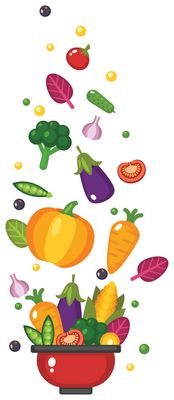WHILE EXPECTING, I was a vomit-spewing dragon, emptying contents several times a day. I suffered from hyperemesis gravidarum—an extreme form of morning sickness—for which Duchess of Cambridge Kate Middleton was hospitalised. The only thing I will have in common with royalty.
So, when the morning sickness passed, I hit the buffet with my bump until the dos and don’ts hit me.
No chillies: baby would turn blind
No sugar: diabetes ran in the family
No brinjal: baby would lose hair
No papaya: it would abort baby
Yes to saffron: baby would turn fair
When I look back, somewhat fondly at the almirah size version of me, I recall those weren’t happy times. Yes, I was happy enough to be pregnant, but I was going through each day with a lot of fears and scrutiny of my choices and their impact on the baby.
A woman needs to be in a good headspace when expecting. It helps calm the baby, her body and mind to the myriad changes they are collectively going through. Myth-busting is a crucial step to achieving this because you identify the good from the myriad rules that come your way.
Let’s examine some of them.
Chillies: What’s wrong with them? Nothing. They are a good source of vitamin C. But before you wolf down a fiery omelette, please note that a sudden hike in spice, masala and carbs can trigger nausea and vomiting. Moderation is key.
Sugar: It is found in every type of food. Check with your gynaecologist and diabetologist if you need to be on the watch. Make healthy choices. Sugar in the right form and quantity is good for your baby’s growth and movement.
Brinjal/yam: Unless you are atopic (suffering from allergic reactions such as eczema or urticaria), there is no need to avoid them.
Papaya: A fully ripe papaya poses no danger. Raw papaya is a proven abortifacient. Its milky secretion (containing papain) can trigger contractions. Since fruit ripening might not be uniform, we might end up consuming a half ripe portion. Avoid this.
Saffron: Your foetus is genetically coded. No saffron or almond milk can change colour, which is dependent on pigments found in skin cells. Higher the melanin (an important pigment), darker the person.
To sum up, there is just one rule: drink to your thirst, eat to your hunger and moderate your cravings. You will do just fine.
DID YOU KNOW?
* In parts of central India, it is mistakenly believed that dairy and other white food (coconut meat) cover baby in a sticky, white coating. This cheesy covering found on babies (mostly pre-terms) is called vernix caseosa. It waterproofs the baby from the amniotic fluid she floats in. It begins to fall off by the fag end of the pregnancy or after birth.
Next Issue: Can iron tablets turn my baby dark?


